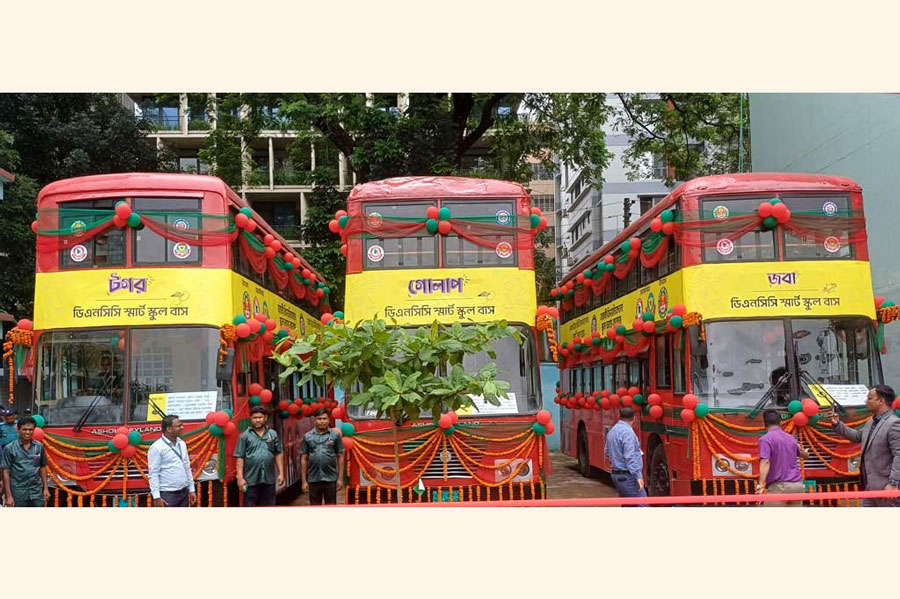
Published :
Updated :

With fanfare, the Dhaka North City Corporation (DNCC) launched a 'smart' school bus service in Dhaka last week on a pilot basis. Under the initiative, the Bangladesh Road Transport Corporation (BRTC) operates three double-decker buses on three fixed routes designed for picking up and dropping off students, and they have a seating capacity of 75 students in each bus. At present, selected Banani Bidyaniketan School and College students are availing of the service by paying Tk800-1,200 per month, according to media reports. After reviewing the outcome of the test run for a couple of months, the service is likely to be expanded in the near future. Last year, a similar service was introduced in Chottagram.
Though the school bus service is popular in many countries, it is only available in the country for a few private schools and colleges. Over the past decade, the government has tried to introduce the service in Dhaka to reduce traffic congestion, but the outcome has been disappointing. It was in 2010 that the BRTC first introduced the service with a fleet of 14 buses along the Azimpur-Pallobi route. After getting a good response initially, the guardians lost interest due to delay and security issues. Now, only three to four buses are providing the service. Again, only a few schools offer a limited number of microbus and minibus services. Some privately operated shuttle bus services are also there, and services are expensive.
The absence of school buses is costly, especially for middle-class guardians, who rely on inefficient public buses or expensive CNG-run three-wheelers and rickshaws. The dirty, worn-out, and congested public buses are infamous for giving those forced to commute daily a terrible experience. For school students, the experience is more disturbing and sometimes unbearable. Time-consuming travel also takes a toll on the students' physiques and minds.
Children of affluent families usually use private cars, and some middle-income guardians also follow the path to make their children's school journey comfortable. The result is heavy traffic congestion on roads and streets near the schools. As many students also come to school by rickshaws, the traffic situation worsens during the institutions' opening and closing times. Many guardians, finding no other alternative, also bring their children to school by motorbike, which is risky.
To get rid of all these horrendous situations, the best option is efficient public transport, which is a distant dream in the country. The school bus is a part of the overall public transport system, and the latest move is a drop in the ocean. Nevertheless, it needs to be encouraged and expanded to different schools. As the DNCC smart school bus is equipped with CCTV cameras for real-time surveillance and a dedicated mobile application allowing parents to monitor their children's location during travel, it is helpful to address security concerns.
Reintroducing the route-based service, initiated more than a decade ago by the BRTC and later discontinued, is also required. Parents and guardians need to be sensitised in this regard so that they can feel safe, allowing their children to commute by school buses.
asjadulk@gmail.com


 For all latest news, follow The Financial Express Google News channel.
For all latest news, follow The Financial Express Google News channel.